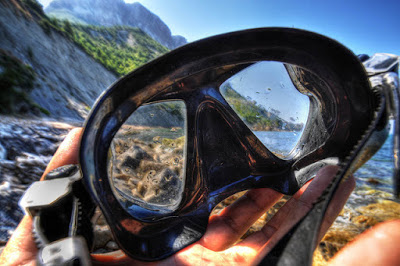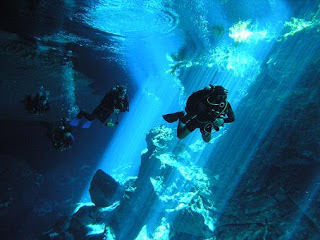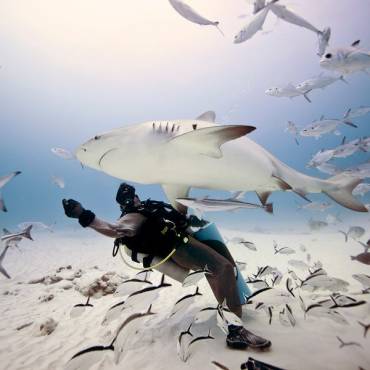The goal of diving is not to dedicate half a dive to cleaning your mask: the diving mask is a very important element in diving equipment and probably the one that causes the most problems and immersions.
What is the best diving mask? In my opinion that mask is the one that you do not have to touch in the water and with which you are comfortable, of which you forget once you enter the water. For one you can be the last $ 100usd model and for another one an old mask that your dad used. There is no ideal mask, but there is your ideal model. Most experienced divers have had several until they have found their diving mask (and when they have lost it or it has been broken and they really miss it).
If the mask fills with water, it will constantly spoil your immersion. If it gets fogged up the minute you enter it will be an almost useless dive. If they hurt you or prevent you from compensating you will have to suspend diving.
How do I try a diving mask?
As a general rule it is advised that you try the mask and inhale through the nose; If the mask stays on your face that can be your mask. But that universal test only shows that the mask seals well out of the water and that it may be your size, do not look only at that test. Not all diving masks have been designed and manufactured in the same way, nor do they have the same styles and characteristics. Not all divers are alike, they dive in the same way or use the mask for the same purpose.
The first step is to find out what are the materials with which the mask is made. The crystals of the mask must be made of tempered glass, since it is more difficult to scratch and fog with more difficulty. In the big stores of non-specialized sports articles they usually sell masks with plastic crystals, do not buy a mask with plastic crystals. They will last you little. On the other hand, the vision with those masks will not be clear and will blur frequently. They are great for the little ones in the family to snorkel on the beach, but not for snorkeling.
Then look at the part that is fixed to the face and with what material is manufactured. This skirt has to be made of silicon (each brand gives a name to the silicone it uses, just make sure it is made of silicone), never plastic since it will last much less and fill with water more often. If you try the mask, make sure that the silicon does not bend and settle firmly on your forehead and on your cheekbones. Also note that the bottom of the mask is not too close to the lips. Remember that you are going to wear a regulator under water that will modify the size and position of your mouth, affecting the shape of the mask. In fact I recommend you do this exercise, if you are a store simulates that you wear the regulator and make sure that the silicone fits perfectly face and that there are no leaks.
If the silicon sits well on your face and does not bother you in the mouth it is time to put the strip behind the head. Now you must make sure that the silicon does not come in contact with the line where your hair starts on the forehead and the strips do not touch or bother you in the ears. Then inspire with your nose again to stick the mask to your face and pay attention to the bridge and the base of your nose. If you notice that the mask touches you it is very possible that while you are diving the pressure of the water will hurt you and bother you a lot, if so, this is not your mask.
If the mask has not bothered you on the bridge or at the base of the nose you can go to the next feature. Now make up, just like you would when you’re going down. So if this is your case, try to press your nose and compensate. If you do it right, if you can press both holes correctly to compensate keep going, if not, try another mask. Another thing you should look at this moment is the amount of air in the mask: the less air there is, the clearer your vision should be, the easier it will be to compensate and the faster the emptying.
Now and finally look around! that’s the main goal of the mask, is not it? Look everywhere. If you see well, you have a good field of vision and you feel comfortable, go ahead, you know that’s your mask.
In this sense, if you commonly use contact lenses to dive you might be interested in buying a diving mask that allows you to change the crystals for ones that can be graduated which would allow you to get rid of the contact lenses in the dives and put on graduated lenses.
The post What diving mask do you recommend? appeared first on Phantom Divers.






